Rui Heng Yang
Ergodic Generative Flows
May 06, 2025Abstract:Generative Flow Networks (GFNs) were initially introduced on directed acyclic graphs to sample from an unnormalized distribution density. Recent works have extended the theoretical framework for generative methods allowing more flexibility and enhancing application range. However, many challenges remain in training GFNs in continuous settings and for imitation learning (IL), including intractability of flow-matching loss, limited tests of non-acyclic training, and the need for a separate reward model in imitation learning. The present work proposes a family of generative flows called Ergodic Generative Flows (EGFs) which are used to address the aforementioned issues. First, we leverage ergodicity to build simple generative flows with finitely many globally defined transformations (diffeomorphisms) with universality guarantees and tractable flow-matching loss (FM loss). Second, we introduce a new loss involving cross-entropy coupled to weak flow-matching control, coined KL-weakFM loss. It is designed for IL training without a separate reward model. We evaluate IL-EGFs on toy 2D tasks and real-world datasets from NASA on the sphere, using the KL-weakFM loss. Additionally, we conduct toy 2D reinforcement learning experiments with a target reward, using the FM loss.
RA-DP: Rapid Adaptive Diffusion Policy for Training-Free High-frequency Robotics Replanning
Mar 06, 2025Abstract:Diffusion models exhibit impressive scalability in robotic task learning, yet they struggle to adapt to novel, highly dynamic environments. This limitation primarily stems from their constrained replanning ability: they either operate at a low frequency due to a time-consuming iterative sampling process, or are unable to adapt to unforeseen feedback in case of rapid replanning. To address these challenges, we propose RA-DP, a novel diffusion policy framework with training-free high-frequency replanning ability that solves the above limitations in adapting to unforeseen dynamic environments. Specifically, our method integrates guidance signals which are often easily obtained in the new environment during the diffusion sampling process, and utilizes a novel action queue mechanism to generate replanned actions at every denoising step without retraining, thus forming a complete training-free framework for robot motion adaptation in unseen environments. Extensive evaluations have been conducted in both well-recognized simulation benchmarks and real robot tasks. Results show that RA-DP outperforms the state-of-the-art diffusion-based methods in terms of replanning frequency and success rate. Moreover, we show that our framework is theoretically compatible with any training-free guidance signal.
DenseShift: Towards Accurate and Transferable Low-Bit Shift Network
Aug 20, 2022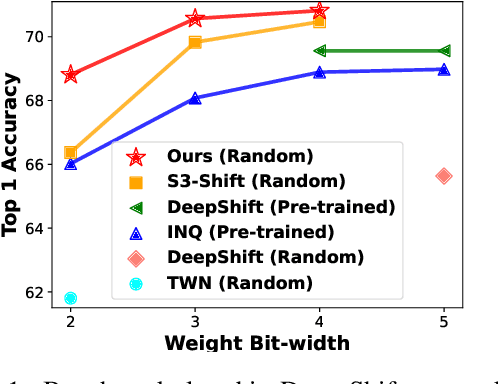
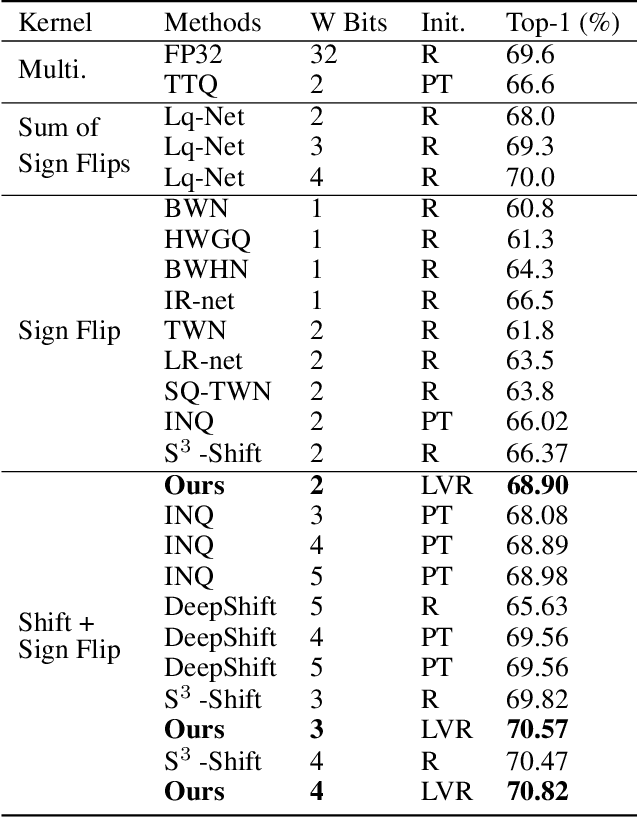
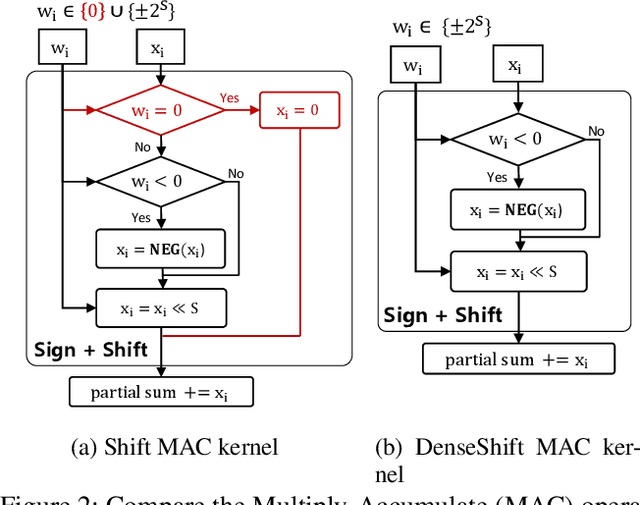
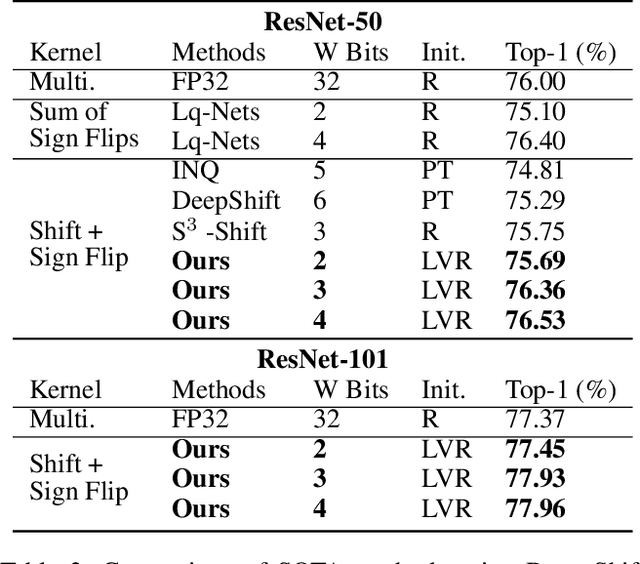
Abstract:Deploying deep neural networks on low-resource edge devices is challenging due to their ever-increasing resource requirements. Recent investigations propose multiplication-free neural networks to reduce computation and memory consumption. Shift neural network is one of the most effective tools towards these reductions. However, existing low-bit shift networks are not as accurate as their full precision counterparts and cannot efficiently transfer to a wide range of tasks due to their inherent design flaws. We propose DenseShift network that exploits the following novel designs. First, we demonstrate that the zero-weight values in low-bit shift networks are neither useful to the model capacity nor simplify the model inference. Therefore, we propose to use a zero-free shifting mechanism to simplify inference while increasing the model capacity. Second, we design a new metric to measure the weight freezing issue in training low-bit shift networks, and propose a sign-scale decomposition to improve the training efficiency. Third, we propose the low-variance random initialization strategy to improve the model's performance in transfer learning scenarios. We run extensive experiments on various computer vision and speech tasks. The experimental results show that DenseShift network significantly outperforms existing low-bit multiplication-free networks and can achieve competitive performance to the full-precision counterpart. It also exhibits strong transfer learning performance with no drop in accuracy.
Low-bit Shift Network for End-to-End Spoken Language Understanding
Jul 15, 2022
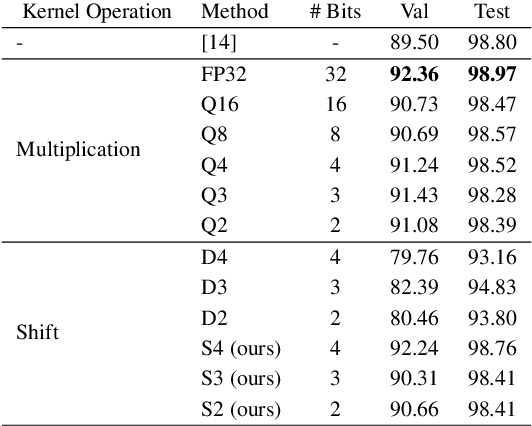
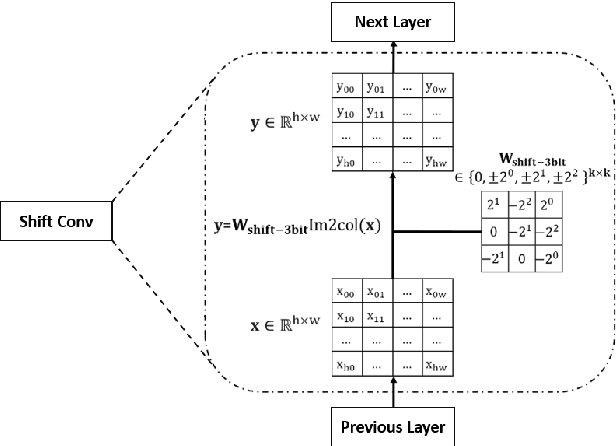
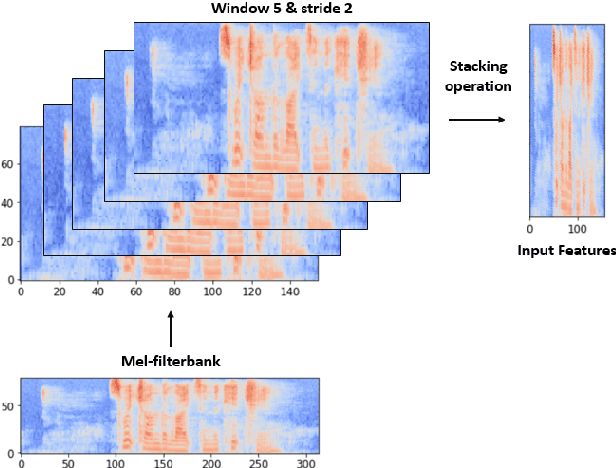
Abstract:Deep neural networks (DNN) have achieved impressive success in multiple domains. Over the years, the accuracy of these models has increased with the proliferation of deeper and more complex architectures. Thus, state-of-the-art solutions are often computationally expensive, which makes them unfit to be deployed on edge computing platforms. In order to mitigate the high computation, memory, and power requirements of inferring convolutional neural networks (CNNs), we propose the use of power-of-two quantization, which quantizes continuous parameters into low-bit power-of-two values. This reduces computational complexity by removing expensive multiplication operations and with the use of low-bit weights. ResNet is adopted as the building block of our solution and the proposed model is evaluated on a spoken language understanding (SLU) task. Experimental results show improved performance for shift neural network architectures, with our low-bit quantization achieving 98.76 \% on the test set which is comparable performance to its full-precision counterpart and state-of-the-art solutions.
Tensor train decompositions on recurrent networks
Jun 09, 2020


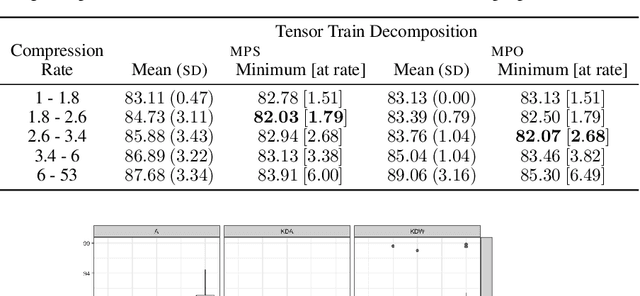
Abstract:Recurrent neural networks (RNN) such as long-short-term memory (LSTM) networks are essential in a multitude of daily live tasks such as speech, language, video, and multimodal learning. The shift from cloud to edge computation intensifies the need to contain the growth of RNN parameters. Current research on RNN shows that despite the performance obtained on convolutional neural networks (CNN), keeping a good performance in compressed RNNs is still a challenge. Most of the literature on compression focuses on CNNs using matrix product (MPO) operator tensor trains. However, matrix product state (MPS) tensor trains have more attractive features than MPOs, in terms of storage reduction and computing time at inference. We show that MPS tensor trains should be at the forefront of LSTM network compression through a theoretical analysis and practical experiments on NLP task.
 Add to Chrome
Add to Chrome Add to Firefox
Add to Firefox Add to Edge
Add to Edge